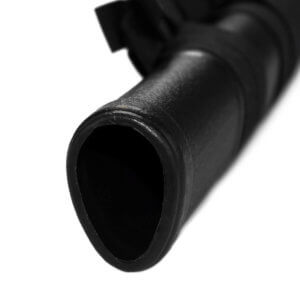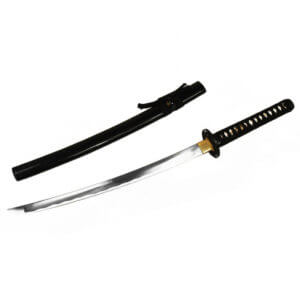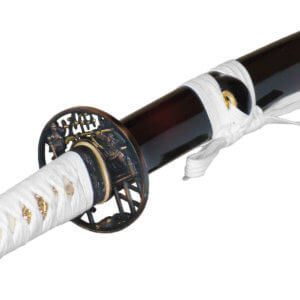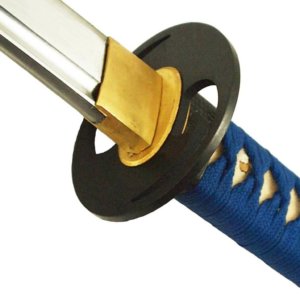Cutting exercises (also Cut test or Tameshigiri) with samurai swords are becoming increasingly popular and are no longer only performed by high-ranking masters of various martial arts.
Foreword
This article is being written because there are currently an increasing number of YouTube videos of people putting themselves in unnecessary danger.
This article only provides basic tips on safety precautions in connection with Tameshigiri. The knowledge of how to wield a sword correctly is best taught in a martial arts school. About our Club search to find the nearest sword fighting school for Japanese sword fighting in your area.
Prerequisites
The premises
In principle, cutting tests should only be carried out in rooms with a sufficient ceiling height. As the ceiling height of a normal home is usually not sufficient for this, they are often carried out outside. They should then be carried out on private property, as the use of a sword in public areas is not permitted.
The underground
If cutting tests are carried out outdoors, the surface should be even. So no uneven lawn or similar.
Surrounding objects
There should be no objects near the cutting target and on the path that the sword takes to the target or in any way in the way.
Bystanders
No persons should be in the vicinity of the cutting target, on the path that the sword takes to the target and 2 to 3 metres at a 360 degree angle around the person carrying out the cutting test. All persons present should look at the person carrying out the cutting test at the time of the cutting test so that they can react if something goes wrong.
No alcohol
The consumption of alcohol quickly tempts you to test a sword that for some reason is there anyway. But this should never be done! Similar to driving a car, it is essential to refrain from consuming alcohol beforehand when wielding a sword.
The right sword
A sword should also be suitable for cutting tests if you use it for this purpose. Decorative swords, for example, are not suitable. What constitutes a decorative sword is explained in the article Decorative swords vs. real swords shown. Swords made of the wrong steel are also not suitable. If you are unsure about the suitability of a sword from our shop, please feel free to contact us.
The right destination
There are all kinds of objects for tameshigiri, such as tatami mats, fruit, bamboo spars, cardboard rolls and much more. The more experienced the practitioner, the more challenging the target can be. Solid branches, roots, metal objects and similar things that are regularly seen in videos are not suitable. With fruit, it should be noted that fruit acid attacks steel. This is taken up again in the point "Protecting the sword" in this article.
The right holder
Depending on what is being cut, a suitable holder should be used for the object. Extra tameshigiri stands are available for the frequently used tatami omote mats. For other targets, care should be taken to use a holder that is stable and will not damage the sword if the target is not hit accurately.
Execution
Protect your hands
It is easy to injure your hands when handling a sword. You should always remember this danger in this context.
Hold on to the sword
You should not cling tightly to the sword handle. But the moment the sword hits the target, your hands should always be firmly closed.
Better to train with a wooden sword first
It is worth practising with a wooden sword beforehand, as this allows you to simulate handling a real sword. Inexpensive wooden swords (bokken or bokuto) are available in our shop to buy. Buying a wooden sword is an additional investment, but it always makes sense for safety reasons!
First stand, then learn to walk
What applies to small children also applies to martial arts. You have to be able to stand properly before you can learn to walk. For cutting tests, this means that the first attempts should be made with two feet on the ground and not with a step. Provided you choose the right material, it should be no problem to cut the target even without a step.
The right distance
By default, a samurai sword is sharpest in the first third from the tip. You should therefore align yourself before the cutting test so that the target is also hit with this area when cutting.
The correct basic position
You must adopt a stable stance. One foot should be in front and the cut should be made in the "direction of the back leg". For example, the right leg in front and the cut from right to left. This ensures that the upper body does not have to twist during the cut. The diagonal cut from right to left is the easiest.
Protect the sword
Ideally, the blade should not be damaged during the cutting test. To achieve this, general conditions such as the blade and the target must match.
When using watered mats, the blade should be dried after each cut to prevent rust from forming. When using fruit, especially citrus fruit, it must be noted that the fruit acid attacks steel. Therefore, when cutting fruit, the blade must be cleaned immediately after use or fruit should not be cut at all.






